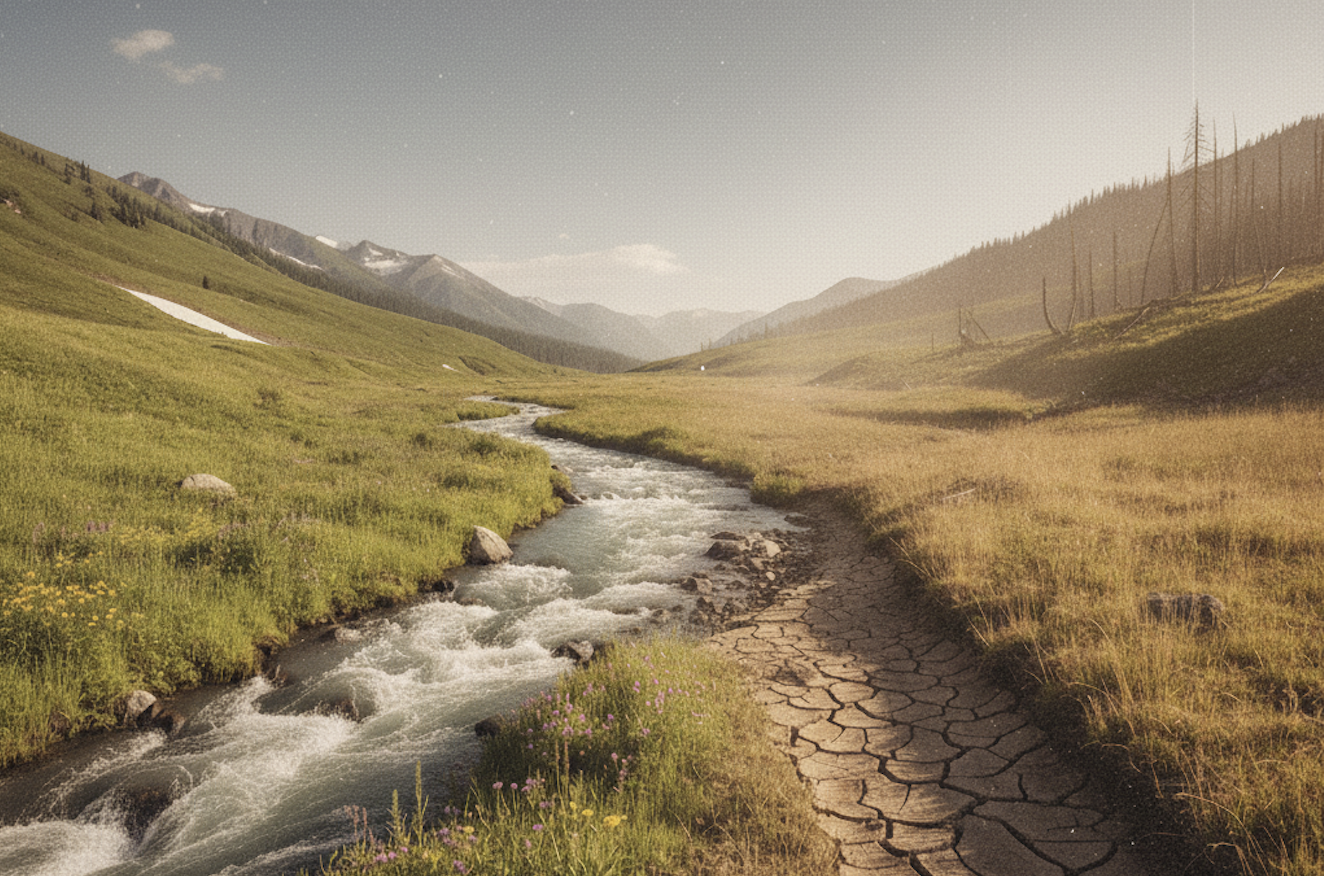We are no longer facing steady warming; we are enduring hydroclimate whiplash: the chaotic and increasingly rapid oscillation between periods of extreme wet and extreme dry conditions. This alarming volatility is transforming seasonal norms into a perilous new baseline for disaster.
This phenomenon is defined by the severe swings between deluge and drought. It is not merely a regional curiosity exclusive to California, but rather a global pattern that has already increased due to climate change, with further large increases expected as global warming continues. Studies confirm that this escalating precipitation volatility is driving the extreme nature of modern wildfire seasons.
The Unprecedented Scale of the Threat
The consequence of this hydroclimate volatility is the establishment of a new, dangerous norm, characterized by longer, hotter, and more destructive fire seasons.
Authoritative scientific assessments conclude that climate change, including increased heat, extended drought, and a thirsty atmosphere, has been a key driver in increasing the risk and extent of wildfires across the Western United States. In fact, nearly all of the observed increase in California’s burned area since 1975 is directly attributable to the warming-induced drying of vegetation.
This has resulted in fire seasons that are significantly longer. In the Western U.S., fire seasons are now on average 78 days longer than they were in the 1970s, primarily due to earlier snowmelt and later fall rains which effectively expand the window of fire-conducive weather.
The result is a period of unprecedented disaster:
Mega-Fires Dominate the Record: The sheer magnitude of recent fires illustrates the new reality. All but two of the top 20 largest California fires since 1950 have occurred since the year 2000.
Acreage Records Shattered: The year 2020 set an alarming record with 4 million acres burned, and 2021 followed closely behind, burning 2.6 million acres, the second-highest year on record.
Catastrophic Costs: These events carry enormous socioeconomic consequences. For example, the 2018 Mendocino Complex and Carr fires resulted in $148.5 billion in total losses, including $27.7 billion in capital losses, $32.2 billion in health costs, and a staggering $88.6 billion in indirect losses, much of which affected industries and locations far outside California.
Deadliest Events: The Camp Fire in 2018 became the deadliest and most destructive wildfire in California history, destroying nearly 19,000 buildings and tragically causing 85 deaths, essentially burning down most of the town of Paradise.
This dramatic environmental shift means that climate change is increasing the likelihood of extreme autumn wildfire conditions across California. The cycle of wet-to-dry extremes has intensified to the point that communities are now simultaneously managing the hazard of severe drought followed immediately by the threat of catastrophic, wind-driven wildfires.
The Underlying Atmospheric Drivers
This volatility is rooted in the physics of a warmer world. Increased temperatures enhance the atmosphere’s capacity to both evaporate water from the landscape and hold more moisture when conditions are right for storms. This mechanism drives the oscillation: periods of drying are intensely amplified, and when precipitation eventually occurs, it is delivered in sudden, high-volume events—such as atmospheric rivers.
This extreme variability creates severe and complex hazards. For example, the Thomas Fire, which swept through Ventura and Santa Barbara counties in December 2017 (outside of what was traditionally considered the fire season), burned for over a month. This fire was fanned by successive Santa Ana Winds, or "SAWs," burning from December 4, 2017, into January 2018. Following this extended period of fire and dryness, the subsequent debris flows in Montecito in 2018 resulted in 23 deaths and nearly $1 billion in damages.
The historical record confirms that extreme weather events—specifically atmospheric rivers linked to flood events and Santa Ana winds linked to wildfires—are driven by shifting atmospheric circulation regimes over the North Pacific Ocean, and recent trends show a rising frequency of patterns that enhance wildfire hazards.
The Age of Whiplash means that managing climate risk is no longer about preparing for one static extreme (like persistent drought), but rather preparing for the rapid and deadly switch between extremes.


